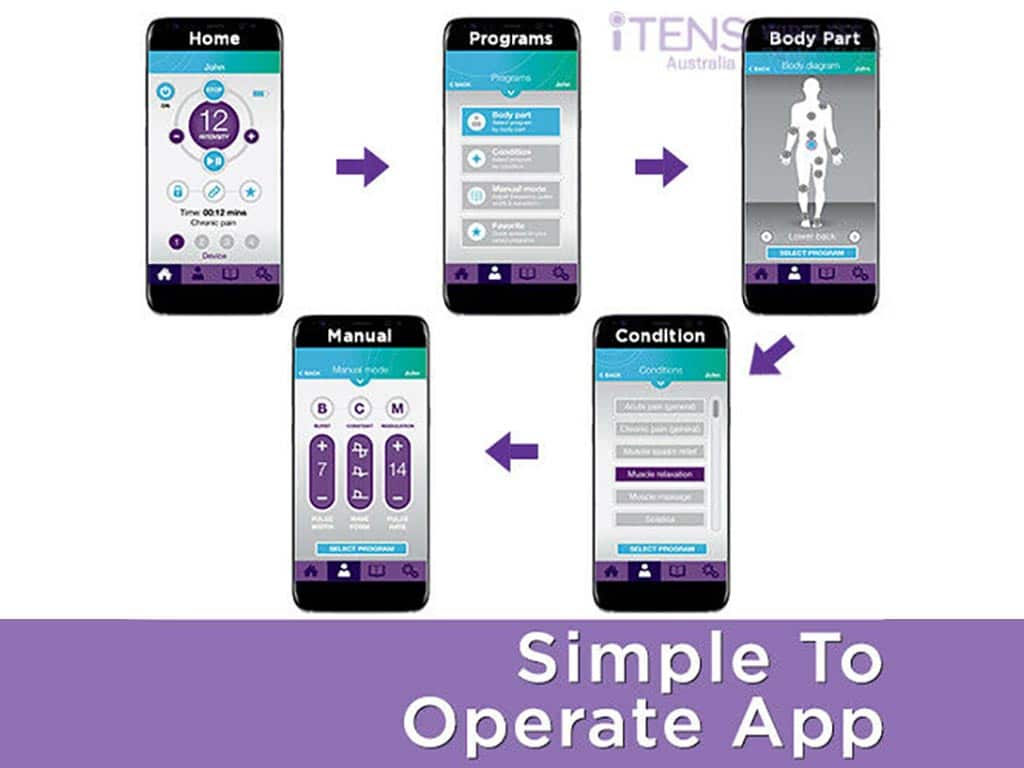
Many people use Transcutaneous Electrical Nerve Stimulation (TENS) machines to help with urinary incontinence, bowel problems, and other pelvic pains. The correct pad placement is vital to reach the right muscles. Experts advise placing the TENS electrodes above the pubic area and the buttocks. In addition to the pad placement, the correct TENS settings help attain effective pain relief. Using TENS machines for pelvic floor stimulation is an efficient method to help improve pelvic floor muscles.
People can develop pelvic floor disorder for various reasons. The disorder is described as the weakening of the pelvic muscles, resulting in the inability to control urination and bowel movements. The pelvic floor muscles play a critical role in urinary control. Fortunately, treatments can be done without surgery, including TENS therapy. In this article, we will talk about the causes of pelvic floor dysfunctions, the pad placement guide, and how to operate the device.
Understanding the Causes of Pelvic Floor Dysfunction Before Using a Pelvic Floor TENS Machine
The pelvic floor is a group of muscles and ligaments in the pelvic region. This area supports the bladder, rectum, uterus, or prostate. A weakening or damage to the pelvic floor muscles disables the control of contracting and relaxing. As a result, the person may experience a frequent need to pee or have urine or stool leakage. Using a pelvic floor TENS machine stimulates the muscles and helps reduce persistent pelvic pain.
Pelvic floor dysfunction (PFD) is common among women during pregnancy or after childbirth. It may also cause a prolapse, where the pelvic organs descend from their position. Thus, it leads to the constant urge to pee even if the bladder is not full. It is also common among older people due to the gradual weakening of the muscles and connective tissues. Moreover, injury to the pelvis, surgery, and being overweight are some risk factors for developing PFD.
Men are also susceptible to PFD with the same symptoms as women, such as the inability to control urination. Some causes include heavy lifting, infections, and stress. In some cases, it may also affect sexual functions. Therefore, a pelvic floor TENS unit works on these muscles to improve their conditions, similar to Kegel exercises. It helps strengthen weak pelvic floor muscles, regaining the ability of bowel and bladder control.
Symptoms
Pelvic floor disorders include the following symptoms:
- Urinary issues – including frequent urges, stress, mixed incontinence, and painful urination
- Constipation or bowel strains
- Pain during sexual intercourse
- Lower back pain
- Muscle spasms
- Pressure in the pelvic region, genitals, or rectum
- Urine or stool leakage when laughing, coughing, or sneezing

How Pelvic Floor TENS Machines Work and Pad Placement Guide
A TENS machine is a battery-powered device with adhesive electrode pads placed near the affected area. It delivers low-voltage electrical pulses to stimulate the nerves to reduce pain. TENS works by blocking pain signals to the brain and releasing endorphins. It is also beneficial in accelerating recovery from an injury or surgery. TENS machines for pelvic floor stimulation interfere with the overactive bladder, calming the muscles and leading to a less frequent need to urinate.
Women may place one small electrode pad over the perineum or the region between the thighs and the vagina and another electrode above the buttocks. For men, place one electrode over the pubic area or sacrum and one pad above the buttocks. This pad placement enables the device to reach the nerve fibres and pelvic floor muscles sufficiently. Individuals may consult a professional for a more specific guide for their condition.
A pelvic floor TENS machine sends gentle impulses to help stimulate and tone the pelvic floor muscles. Professionals advise TENS therapy two to three times a week for six weeks or longer. One session may last for twenty to thirty minutes. It is vital not to overuse a TENS machine as it may cause burns and muscle soreness. Additionally, using TENS with physical therapy may make the treatment work better.
Pad Placement to Avoid
A TENS machine is not advisable in these areas:
- temples, mouth, and across the head
- on the front or sides of the neck (near carotid arteries)
- directly over the bones, joints, or spine
- chest and back simultaneously
- near an electrical implanted device
- on a pregnant belly
- on broken skin or open wounds

Operating a Pelvic Floor TENS Machine
Operating TENS units for pelvic floor stimulation is simple. After placing the electrode pads on the area, turn the device on. Start with the lowest intensity and gradually increase it to an optimal level. The device will produce mild, tingling sensations that help activate muscle rhythms. Furthermore, increasing the intensity makes the currents feel firmer, helping the pelvic floor muscles to tighten. After the session, they may turn off the unit and remove the electrodes.
A TENS machine can be set to high and low frequencies for specific results. Generally, high frequencies induce the pain gate controllers in the spinal cord to close, while low frequencies prompt endorphin release. Moreover, high-frequency TENS helps strengthen weak muscle fibres, increasing the ability to control urinary functions and support the pelvic organs. On the other hand, low-frequency TENS relaxes the muscles and reduces painful contractions or spasms.
A person may operate a pelvic floor TENS machine using both low and high frequencies. It is also advisable to use alternating currents to feel the effects more effectively. In addition, use the appropriate TENS pads depending on the location. For instance, small electrode pads fit joints and small areas. Large electrodes are ideal for wider coverage, such as the lower back and thighs. Lastly, some devices have wireless electrodes for more convenient TENS treatment.
Safety Precautions
These measures help prevent minimal risks and side effects:
- Do not set the intensity too high to avoid burns, redness, or itchiness.
- Use hypoallergenic gel pads to minimise harsh skin reactions.
- Consult a doctor first if you have heart problems, epilepsy, or are pregnant.
- Do not use if with bladder infections.
Conclusion
Pelvic floor disorder is a serious medical condition that needs a proper treatment plan. Fortunately, non-surgical treatments are available to help improve the conditions of pelvic floor muscles. One of the efficient methods is using pelvic floor TENS machines. TENS helps reduce pain symptoms as well as stimulate weak muscle fibres. Thus, regular use may help with alleviating incontinence and bowel functions. For women, a TENS machine is also valuable for managing period pain and labour contractions.
TENS therapy is also excellent for managing chronic pain like arthritis, sciatica, and fibromyalgia. Many people use a TENS machine to minimise the need for oral medications. Additionally, it is efficient for people with busy lifestyles who are unable to attend regular therapies. Portable devices like the wireless iTENS from iTENS Australia are convenient for various conditions. It is discreet and ready to use within seconds.




















